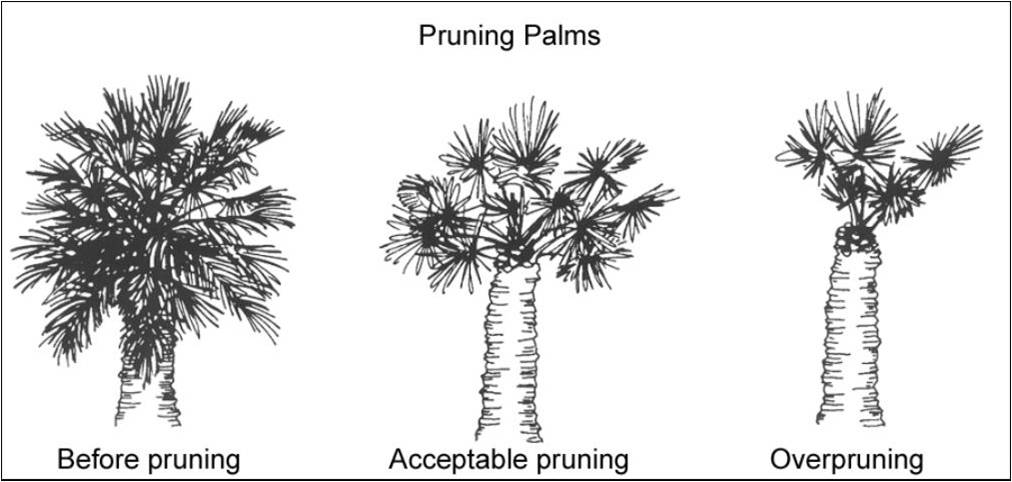A Landscape Built for Hurricanes Starts with Design and Maintenance
The billowing winds are afoot. We officially entered hurricane season June 1, but the National Oceanic and Atmospheric Administration’s (NOAA) National Hurricane Center states the peak of hurricane season begins in mid-August.
Last year’s hurricane season was very destructive, especially due to Hurricane Michael. The widespread damage caused by the storm has long-term economic impacts on the state and its residents. Storm-related damage occurred at various scales, including residential landscapes.
Strategically, as homeowners, gardeners, or landscapers, pro-active approaches to design and maintenance will reduce the threat of storm-related damage in our landscapes. Concurrently, proper design and maintenance will increase landscape resiliency.
Design
Proper landscape design is our first step in creating healthy landscapes that are resilient to storm-related damage. The first principle of the Florida-Friendly Landscaping Program™, “Right Plant, Right Place,” prioritizes proper plant selection to match environmental conditions, landscape use, and size requirements.
When selecting trees for our landscapes, we need to be aware of tree location in our landscape. Large trees should be away from power lines, homes, and roadways. Selecting wind-resistant trees in our landscapes helps decrease the concern for wind-related breakage associated with storms. Trees with the highest wind-resistance include the live oak (Quercus virginiana), cypress (Taxodium spp.), and the Cabbage Palm (Sabal palmetto). Trees with the lowest wind-resistance include the water oak (Quercus nigra), Chinese elm (Ulmus parvifolia), and southern red cedar (Juniperus silicicola).
Trees classified with a lower wind-resistance should not be eliminated from the landscape, but we should be cognizant of their location in our landscape. To help increase the general resistance to storm-related damage in the landscape, we should design landscapes with plant groups. Grouping plants together in masses significantly increases wind resistance.
Maintenance
Despite a wind-resistance classification and location of trees within a designed landscape, proper maintenance is the second-leg in creating a resilient landscape. Regular pruning and maintenance eliminates dead, dying, or diseased limbs from trees, which leads to a healthier and more wind-resistance tree.
Proper pruning of our trees is very important. For most of our hardwood trees, proper pruning can reduce canopy movement during high winds. Palms rarely require any pruning. In fact, the practice of “Hurricane Pruning” should be avoided and highly discouraged. Our palms are naturally resistant to high winds. Excessively pruning palms reduces its growth and increases the threat of pest and disease. In fact, over-pruning palms could lead to its death. If pruning a palm is required, only remove the dead, lower fronds.
In any case, pruning trees can be very dangerous. If you are uncomfortable pruning a tree, please contact an ISA Certified Arborist (www.treesaregood.com/findanarborist). Certified arborist are properly trained in pruning trees.
Repairing a Damaged Landscape
Following proper design and maintenance strategies reduces the threat of wind-related damage. Although, despite our best intentions to maintain a landscape resistant to wind-damage from storms, the damage is inevitable. These strategies aim at reducing the severity of the damage.
Concluding any storm or hurricane, we must practice our due diligence and be very safe. Cleaning and restoring our landscapes from hurricane-related damage is dangerous. While working in the landscape, you should always work with a buddy, look for any threats, and avoid over-exhaustion. While working with sharp instruments, practice Totin’ Chip skills by designating safe working areas, wearing protective equipment, cut away from the body, avoid kickback, and take your time.
Living in Florida comes with the inherent risk of hurricanes. By following the best management practices in our landscapes, we have the ability to reduce threats of storm-related damages to our homes and community.
For More Information
For more information on creating a wind-resistant landscape, read the UF/IFAS Extension document, “Trees and Wind: Lessons Learned from Hurricanes.”
You may also contact the UF/IFAS Extension Alachua County Office:
Monday-Friday
9:00am-4:30pm
(352)955-2402
mag@alachuacounty.us
 0
0

